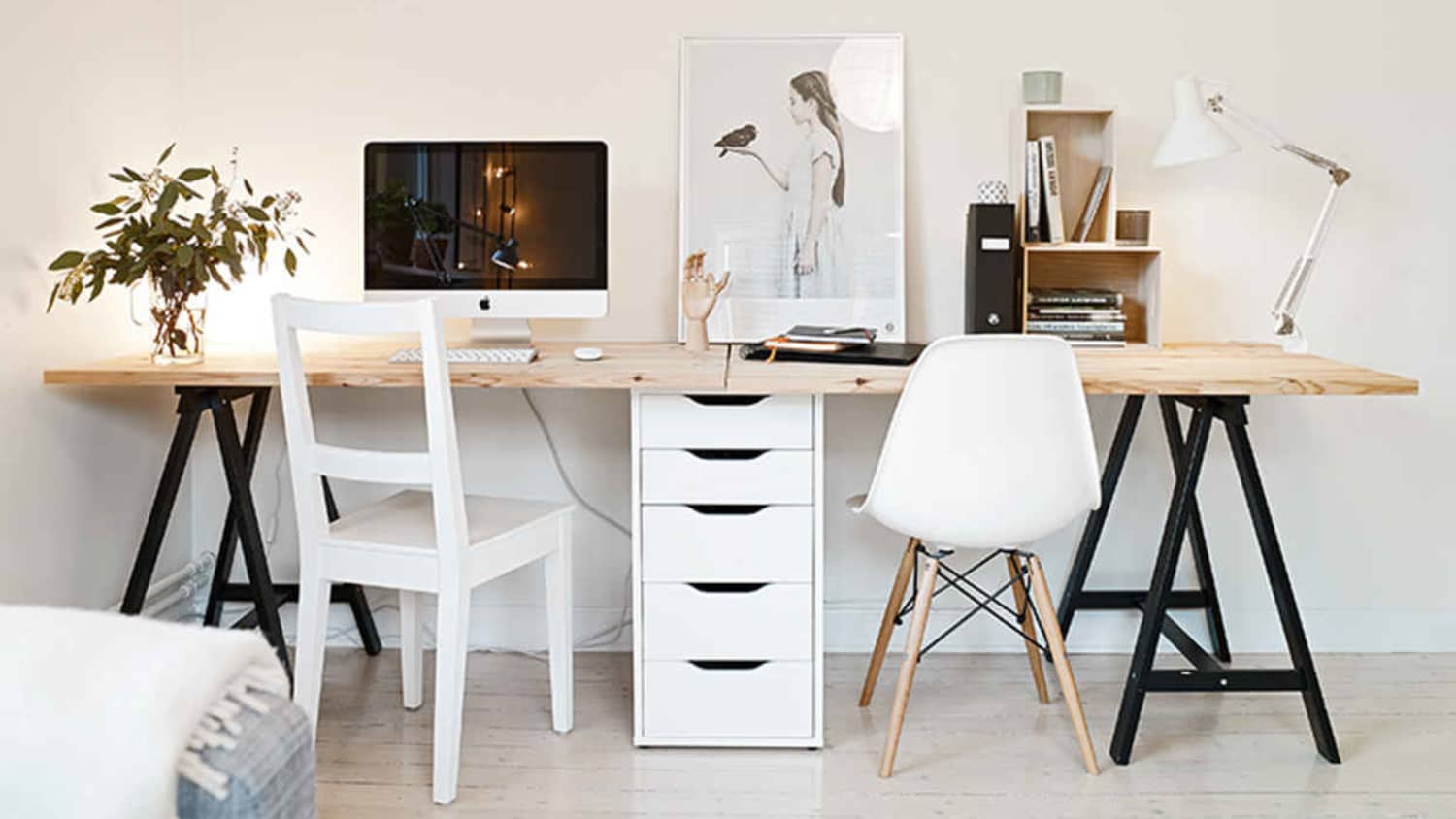Designing and building your own custom computer desk not only allows you to create a workspace that fits your needs and style but also provides a fulfilling DIY project. In this guide, we will explore various DIY workspace design ideas to inspire you in creating a custom computer desk that is both functional and visually appealing. Let’s dive in!

1. Assess Your Needs:
a. Workspace Size: Determine the dimensions of your desk based on the available space in your room and the equipment you will be using, such as the computer, monitor(s), keyboard, and peripherals.
b. Ergonomics: Consider ergonomics when designing your desk, ensuring that the height and layout provide a comfortable and efficient working experience.
c. Storage and Organization: Assess your storage needs for items like cables, documents, and office supplies. Incorporate shelves, drawers, or cable management solutions into your desk design.
2. Select Materials and Style:
a. Wood: Use solid wood or plywood to create a classic and durable desk. Choose from a variety of wood types, such as oak, maple, or birch, based on your preference and budget.
b. Industrial: Embrace an industrial aesthetic by using metal pipes, fittings, and reclaimed wood for a modern and rustic look.
c. Minimalist: Opt for a sleek and minimalist design using clean lines and minimalist materials like glass and metal.
d. Repurposed Materials: Get creative by repurposing old furniture or salvaged materials like doors or pallets to give your desk a unique and eco-friendly touch.
3. Design and Construction:
a. Sketch or Use 3D Modeling: Sketch or use 3D modeling software to visualize your desk design. Consider the layout, dimensions, and placement of components like the monitor, keyboard tray, and storage compartments.
b. Measure and Cut: Measure and cut the selected materials according to your design. Use appropriate tools such as a circular saw, jigsaw, or handsaw for precise cuts.
c. Assemble the Desk: Join the pieces together using screws, brackets, or adhesive, ensuring stability and durability. Consider using reinforcing methods like wood glue or dowels for added strength.
d. Finishing Touches: Sand the surfaces to smooth any rough edges and apply a finish or stain to enhance the appearance and protect the wood. Choose a finish that complements your desired style, such as a clear varnish for a natural look or a colored stain for a more vibrant finish.
4. Custom Features and Accessories:
a. Cable Management: Incorporate cable management solutions like grommets, cable trays, or adhesive cable clips to keep your workspace tidy and cables organized.
b. Monitor Mounts: Install monitor mounts or adjustable monitor arms to optimize ergonomics and free up desk space.
c. Keyboard Tray: Add a retractable keyboard tray to create a more comfortable and ergonomic typing position.
d. Lighting: Enhance your workspace with LED strip lights, under-desk lighting, or a task lamp for improved visibility and ambiance.
5. Personalization and Organization:
a. Decorative Touches: Add personal touches like decals, stickers, or artwork to reflect your personality and create a visually appealing workspace.
b. Desk Accessories: Choose desk accessories such as pen holders, desk organizers, or a desk mat to keep your essentials within reach and organized.
c. Personalized Cable Sleeves: Use cable sleeves in colors or patterns of your choice to add a stylish and organized look to your cable management system.
6. Enjoy Your Custom Workspace:
a. Organize and Arrange: Arrange your computer, peripherals, and accessories on your newly built custom desk to optimize functionality and create an efficient workflow.
b. Personalize and Adapt: Continuously adapt and personalize your workspace based on your evolving needs and preferences. Experiment with different layouts and organization methods to find what works best for you.
Conclusion:
Designing and building your own custom computer desk is a rewarding DIY project that allows you to create a workspace tailored to your needs and style. By following these DIY workspace design ideas, you can embark on the journey of crafting a functional, ergonomic, and visually appealing desk that enhances your productivity and brings joy to your work environment. Remember to prioritize ergonomics, incorporate storage solutions, and personalize your workspace to make it truly yours. Enjoy the process, get creative, and build a custom desk that inspires you to work at your best.